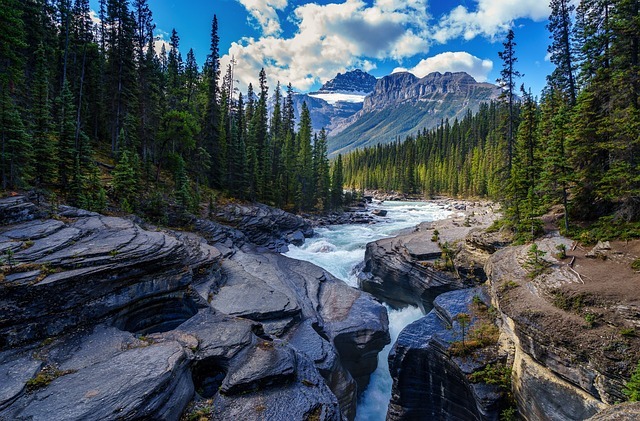Surviving in the rugged terrain of canyonlands and gorges is a thrilling adventure that demands both skill and resilience. As you delve into the heart of these untamed landscapes, it’s essential to equip yourself with the knowledge and tools needed to conquer the challenges nature throws your way. In this guide, we’ll explore the intricacies of wilderness survival in canyonlands and gorges, providing you with practical insights to navigate these breathtaking but potentially perilous environments.
Understanding the Terrain
Canyons and Gorges
Canyonlands and gorges are geological wonders, sculpted by the relentless forces of wind and water over centuries. The sheer cliffs and meandering waterways create an environment that is both majestic and formidable. Before embarking on your adventure, familiarize yourself with the unique features of these terrains to better understand the potential obstacles you might encounter. Canyons and gorges are geological wonders that captivate our imagination with their stunning landscapes and intricate formations. These natural wonders hold secrets and stories carved by the forces of nature over millions of years. Let’s delve into the fascinating world of canyons and gorges with these 10 intriguing facts:
1. Canyons vs. Gorges
Canyons and gorges are often used interchangeably, but there’s a subtle distinction. Canyons are typically deeper and wider, while gorges are narrower with steeper walls. Both, however, offer breathtaking views and challenging terrains.
2. Nature’s Sculptors
The primary architects of canyons and gorges are erosion and weathering. Over time, water, wind, and other natural forces carve through rock, creating these magnificent formations. The process is slow but yields awe-inspiring results.
3. The Grand Canyon
The Grand Canyon, one of the world’s most famous canyons, is a geological tapestry showcasing rock layers that span millions of years. Each layer tells a story of the Earth’s evolution, making it a living museum of geology.
4. Slot Canyons
Slot canyons, characterized by narrow, winding passages, are a unique feature of many canyon systems. The play of light and shadow within these slots creates surreal and mesmerizing visuals, making them popular among adventurers and photographers.
5. The Deepest Gorge
Holding the title for the world’s deepest gorge, the Yarlung Tsangpo Grand Canyon in Tibet plunges to astonishing depths. Its sheer cliffs and challenging terrain make it a destination for only the most intrepid explorers.
6. Canyons as Biodiversity Hotspots
Canyons and gorges aren’t just geological wonders; they also serve as biodiversity hotspots. The unique microclimates within their depths provide habitats for a variety of plant and animal species specially adapted to these challenging environments.
7. Flash Floods
One of the most significant risks in canyons and gorges is the potential for flash floods. Rainfall miles away can quickly turn a dry canyon into a raging river. Adventurers must be vigilant and prepared for sudden changes in weather.
8. Canyon Colors
The rocks within canyons and gorges exhibit a stunning array of colors, ranging from rich reds and oranges to deep purples and browns. These hues result from the presence of different minerals and contribute to the visual splendor of these landscapes.
9. Humans and Canyons
Throughout history, humans have been drawn to canyons for shelter and resources. Ancient civilizations, such as the Anasazi in the American Southwest, built cliff dwellings within canyon walls, showcasing the ingenuity of adapting to challenging terrains.
10. Adventure and Exploration
Canyoneering, the sport of navigating canyons using a variety of techniques, has gained popularity among thrill-seekers. Rappelling down cliffs, swimming through narrow passages, and exploring hidden alcoves make canyoneering an exhilarating and challenging adventure.
Canyons and gorges stand as testaments to the Earth’s dynamic forces and offer a playground for those seeking both natural beauty and thrilling escapades. Whether you’re an avid adventurer or a casual observer, these geological wonders continue to inspire awe and wonder with their unparalleled beauty and complexity.
Navigating Steep Slopes
Scaling the steep slopes of canyons requires the right equipment. Ensure your backpack includes sturdy climbing ropes, harnesses, and reliable carabiners. Proper footwear with excellent traction is essential to navigate the rocky surfaces effectively.
Safety First
Rappelling down canyon walls is a skill that every wilderness enthusiast should acquire. Learn to control your descent, trusting your equipment while maintaining a keen awareness of your surroundings. This skill becomes crucial when exploring the labyrinthine depths of gorges.
Water Woes
Gorges often feature rivers and waterways that present unique challenges. Develop proficient swimming skills and invest in a high-quality inflatable raft for navigating these water bodies safely. Always check the water’s current and depth before attempting a crossing.
Staying Dry
In canyon environments, sudden rainstorms can turn a dry canyon into a rushing river. Protect your essentials by packing them in waterproof bags and containers. This precaution ensures your survival gear remains dry, preventing potential disasters.
Surviving in the Wild
Building a fire is not only a source of warmth but also a vital aspect of wilderness survival. Pack waterproof matches, a reliable firestarter, and the knowledge to create a fire in various conditions. In the cold depths of canyons, a well-built fire can be a lifesaver.
Foraging for Food
Canyonlands and gorges harbor a variety of plant life that can sustain you in times of need. Learn to identify edible plants, such as cacti and wild berries. Familiarize yourself with the local wildlife and understand which animals are safe to consume.
Water Sourcing
Water sources in canyons may be scarce, but with the right knowledge, you can locate hidden springs and moisture-rich areas. Invest in a reliable water purification system to ensure the water you find is safe for consumption.
Dealing with Wildlife
While canyons and gorges are often inhabited by diverse wildlife, it’s crucial to understand how to coexist safely. Respect the natural habitat of animals, keep a safe distance, and know how to react in case of unexpected encounters.
Wildlife First Aid
In the wilderness, bites and stings are inevitable. Carry a comprehensive first aid kit that includes antivenom for local snake species, as well as remedies for insect bites. Knowing how to react swiftly to these situations can make all the difference in your survival.
Conclusion
Surviving in canyonlands and gorges is a testament to human adaptability and resilience. By mastering the skills outlined in this guide, you’ll not only navigate these challenging landscapes but also discover the profound beauty they conceal. Approach each adventure with respect for nature, armed with the knowledge to overcome adversity, and let the canyons and gorges become your playground rather than a formidable challenge. Stay safe, explore wisely, and let the untamed wilderness be your greatest teacher.







